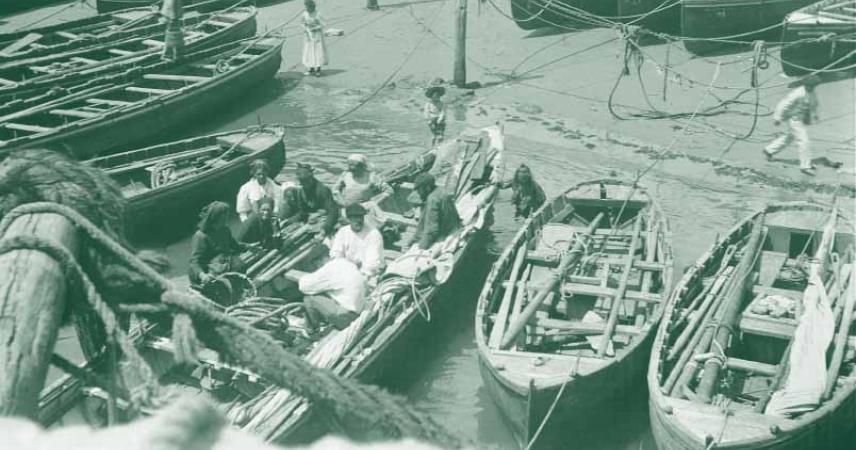Until the early 20th century, this bay offered very different conditions for commercial shipping: No barriers or quays, the currents, the rocks and above all a sand bank at the mouth of the estuary, the so called “Portugalete sand bar”, made getting into port upriver in the capital of Bizkaia a complicated matter.
What for outside captains was a problem, for the fishermen of the Old Port and neighbouring towns and villages was a job opportunity: Piloting. Once a ship was spotted, the pilots’ boats rowed out to get there first and win the service of taking it in to dock. Once on a level with Portugalete, they received instructions from the Master Pilot in order to negotiate the sand “bar”. It was a very risky task due to the conditions in the bay, where shipwrecks were frequent. On these occasions pilots and fishermen organised salvage operations.
The lemanes or pilots were members of the Fishermen’s and Seafarers’ Brother-hoods, trade organisations that defended their interests, but it was the Consulate of Bilbao that regulated piloting activities from 1561: Qualifications, duties, shifts by municipality, fees, etc.
At the end of the 19th century large port infrastructures were promoted in the bay and they managed to eliminate the sand “bar” thanks to the iron quay projected by Evaristo Churruca. The figure of the lemán pilot disappeared, but not their function of helping in manoeuvres, a task which is currently performed by modern day port pilots known as prácticos.
